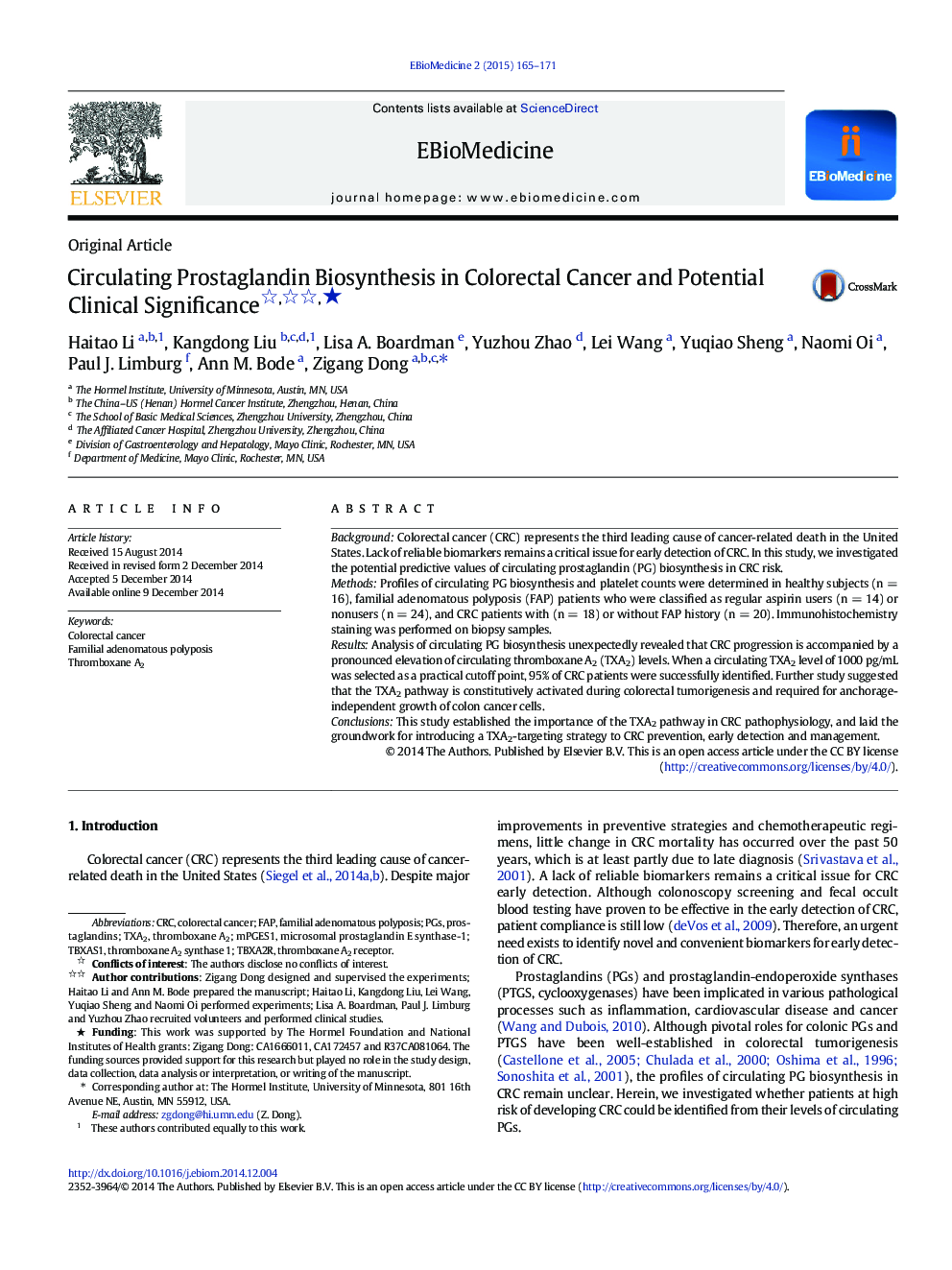| Article ID | Journal | Published Year | Pages | File Type |
|---|---|---|---|---|
| 2121322 | EBioMedicine | 2015 | 7 Pages |
•CRC progression is associated with higher circulating TXA2 levels, which merits investigation as a predictor of CRC risk.•TXA2 pathway is constitutively activated during colorectal tumorigenesis.•TXA2 pathway is required for anchorage-independent growth of colon cancer cells.•This study lays the groundwork for introducing a TXA2-targeting strategy to CRC prevention, early detection and management.
BackgroundColorectal cancer (CRC) represents the third leading cause of cancer-related death in the United States. Lack of reliable biomarkers remains a critical issue for early detection of CRC. In this study, we investigated the potential predictive values of circulating prostaglandin (PG) biosynthesis in CRC risk.MethodsProfiles of circulating PG biosynthesis and platelet counts were determined in healthy subjects (n = 16), familial adenomatous polyposis (FAP) patients who were classified as regular aspirin users (n = 14) or nonusers (n = 24), and CRC patients with (n = 18) or without FAP history (n = 20). Immunohistochemistry staining was performed on biopsy samples.ResultsAnalysis of circulating PG biosynthesis unexpectedly revealed that CRC progression is accompanied by a pronounced elevation of circulating thromboxane A2 (TXA2) levels. When a circulating TXA2 level of 1000 pg/mL was selected as a practical cutoff point, 95% of CRC patients were successfully identified. Further study suggested that the TXA2 pathway is constitutively activated during colorectal tumorigenesis and required for anchorage-independent growth of colon cancer cells.ConclusionsThis study established the importance of the TXA2 pathway in CRC pathophysiology, and laid the groundwork for introducing a TXA2-targeting strategy to CRC prevention, early detection and management.
